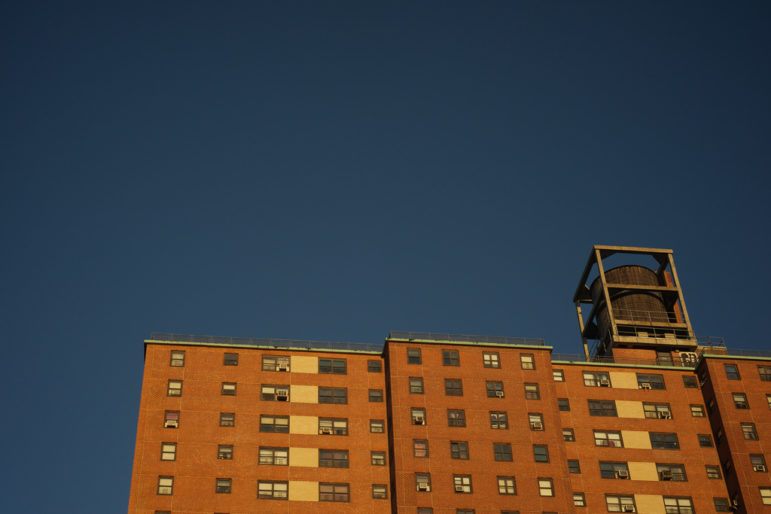
Alexander Rabb
NYCHA's Ulysses S. Grant Houses
You can say a lot of things about lead. For one thing, it’s a pretty handy substance: abundant, durable, malleable, ductile, with a low melting point. That’s why it found its way into so much of our stuff during the 19th and 20th centuries–into paint, batteries, gasoline, ceramics, pipes, you name it.
It is also incredibly dangerous. “No amount of lead is safe,” is how the National Institutes of Health puts it. “Eliminating all lead exposure in our environment is our best course of action.” Lead can be absorbed through breathing its dust or eating it, has long-lasting health impacts even when found at fairly low levels in the bloodstream and poses a health risk to children as well as adults.
Hence the alarm when the city’s Department of Investigation revealed two weeks ago that in 2012, reacting to a relaxed federal rule for more general inspections, the New York City Housing Authority stopped inspecting for lead-paint hazards in the 55,000 apartments suspected of having lead paint present, putting the agency out of step with local laws and possibly with other federal regulations. NYCHA then continued to certify to the feds, falsely, that they were obeying all lead laws. NYCHA’s chairwoman signed such an attestation in 2016 even after she was informed–and had informally told the feds–that it was not accurate.
Since 2014, four NYCHA children have had high lead levels, but the agency says, “No additional medical consequences have been observed in any of the four children.” Still, when NYCHA resumed inspections last year of the 4,200 potential lead-paint apartments with children under 6, it had to make paint-related repairs in more than half of them.
There have been calls for the chairwoman, Shola Olatoye, to resign, and calls for her to stay.
But joining me on the new BRIC-TV program 112BK on Wednesday were two NYCHA residents—Aixa Torres of the Smith Houses and Karen Blondel from Red Hook—who agreed that lead was not their top concern. After years of disinvestment and mismanagement, the woman said more mundane but oppressive problems like leaks and mildew were that they and their neighbors worried about. And while both said they had faith in Olatoye, there were mixed feelings about whether those conditions are getting any better.
Watch below. Our segment begins at the 3:25 mark.









3 thoughts on “Video: Two NYCHA Tenants Say Lead is Not Their Top Concern”
Both leaders were hand selected by Olatoye and her communications and resident engagement team due to their personal relationships, as Ms Torres always states when anyone disagrees with her…Do I have to call the chair, I have her number on speed dial.
Ask other leaders out of 364 developments only 2 show confidence…ask the other 362, many will concur. ..no confidence as the chair “speaks with fork tongue”…
That is not true. Ms. Torres was connected to us by NYCHA’s press office. Ms. Blondel’s appearance was arranged by the Fifth Avenue Committee, which has been critical of NYCHA and the administration on a number of points.
Go to your doctor and get tested for lead if you live in a NYCHA building. You’ll have the peace of mind knowing where you and your family stand on this issue.